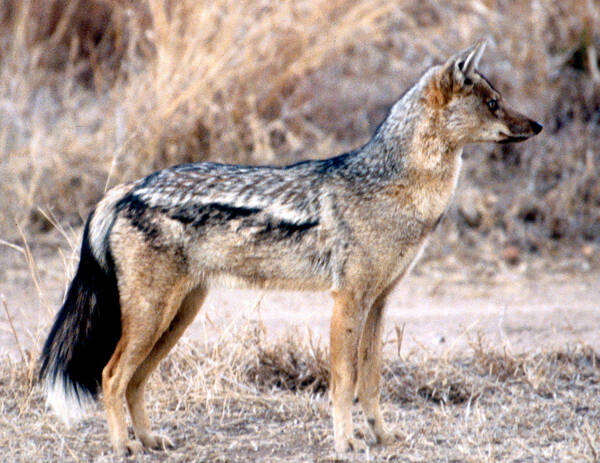Canis adustus
IUCN
LCBasic Information
Scientific classification
- name:Canis adustus
- Scientific Name:Canis adustus,Side-striped Jackal,side-striped jackal
- Outline:Carnivora
- Family:Canidae Caninae Canis
Vital signs
- length:69-81cm
- Weight:7-12kg
- lifetime:About 8 years
Feature
The sides of the body have white stripes with black edges, and the legs and ears are shorter than other jackals.
Distribution and Habitat
The side-striped jackal is distributed in Angola, Benin, Botswana, Burkina Faso, Burundi, Cameroon, Central African Republic, Chad, Congo, Democratic Republic of Congo, Côte d'Ivoire, Ethiopia, Gabon, Gambia, Ghana, Guinea, Guinea-Bissau, Kenya, Malawi, Mali, Mauritania, Mozambique, Namibia, Niger, Nigeria, Rwanda, Senegal, Sierra Leone, Somalia, South Africa, Sudan, Swaziland, United Republic of Tanzania, Togo, Uganda, Zambia, Zimbabwe.
The side-striped jackal mainly lives in tropical Africa between 15 degrees north latitude and 23 degrees south latitude, and inhabits humid and wooded areas in eastern, western and central Africa, including grasslands, swamps and hilly areas. The range of activity is below 2,700 meters above sea level. But it does not live in tropical rainforests. Sometimes it also appears near farms and highways.
Appearance
The side-striped jackal is a medium-sized dog of sub-Saharan Africa, with males slightly larger than females. Males weigh 7.3-12 kg, and females generally weigh around 10 kg. It is easily distinguished from other species of the same genus by appearance. It has long legs and a long muzzle, with legs and ears that appear shorter than in other jackals. The tail is short and bushy. Its fur is slightly more drab, generally ranging from light gray to tan, darker on the back than underparts, and the black tail usually has a distinctive white tip. The head is brown-gray, and the legs often have a reddish hue. There is a clear white stripe on the side of the body from elbow to rump, bordered by slightly blurred black. These stripes are more obvious in adults than in subadults.
Details
Side-striped Jackal (scientific name: Canis adustus) is also known as Side-striped Jackal in English. There are 6 subspecies.

Side-striped Jackal is monogamous, with a relatively stable family structure. It regularly marks its territory with scent and resists intruders, and has a strong sense of territory. They are strictly nocturnal animals, and their activity peaks before dawn. There are usually 6 jackals in each territory, but there are rare records of 12, including parents and their adult children. Side-striped jackals usually search for prey alone or in pairs. They use scent markings to mark their territory. They can make many kinds of sounds to warn intruders and contact family members.
Side-striped jackals eat everything from insects to plants, and also pick carrion. They can spread rabies.
Side-striped jackals raise newborns together. They mate before the rainy season every year, which is from June to October. The gestation period is 57-70 days, and 3-6 cubs are born per litter. The lactation period is 8-10 weeks. They reach sexual maturity at 6-8 months old and leave their parents at 11 months old.
The distribution range of the side-striped jackal is wide, and it is not close to the critical value of vulnerable and endangered species survival (distribution area or fluctuation range is less than 20,000 square kilometers, habitat quality, population size, and distribution area fragmentation). The population trend is stable, so it is evaluated as a species with no survival crisis.
Listed in the 2014 Red List of Endangered Species of the World Conservation Union (IUCN) ver 3.1-Least Concern (LC).
Protect wild animals and eliminate game.
Maintaining ecological balance is everyone's responsibility!








